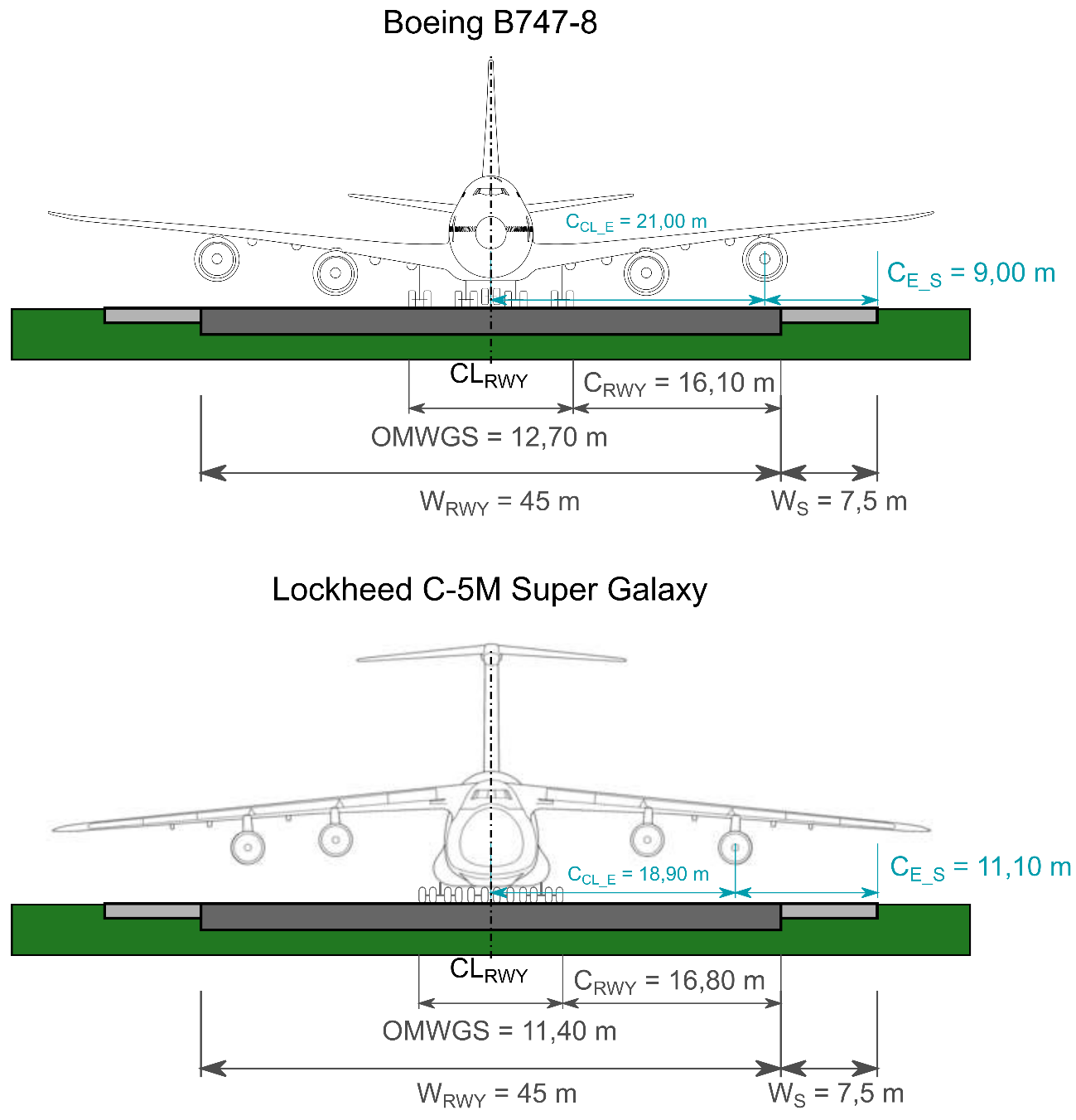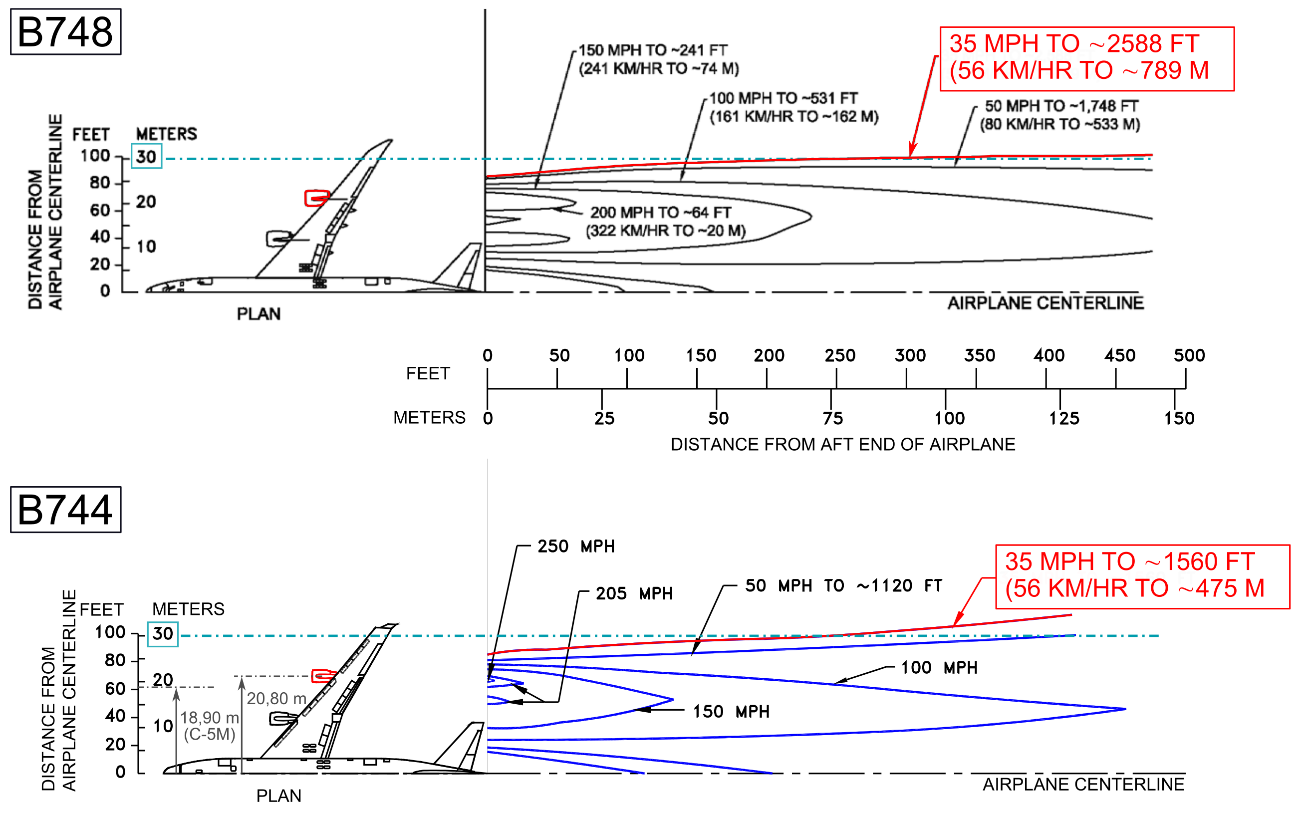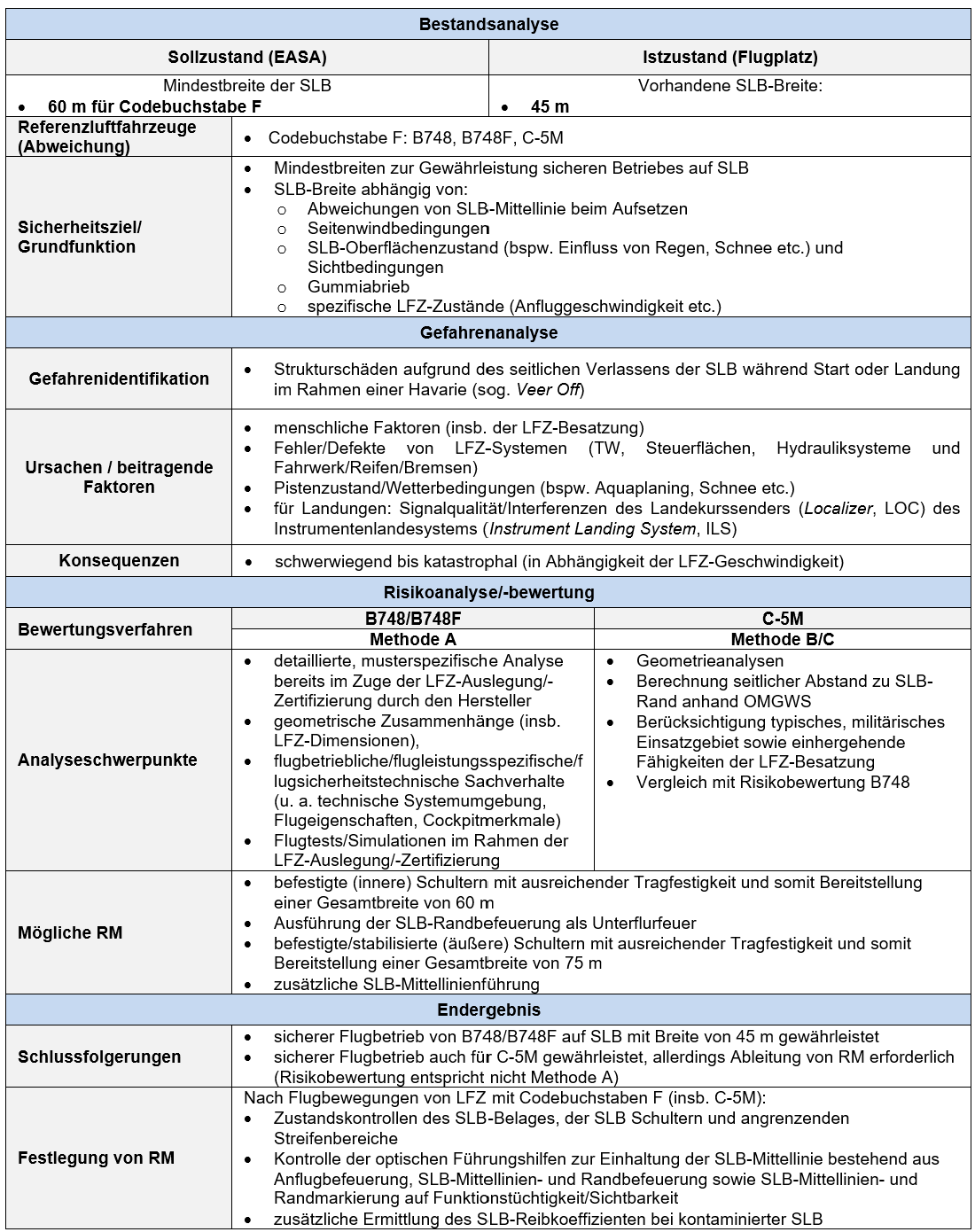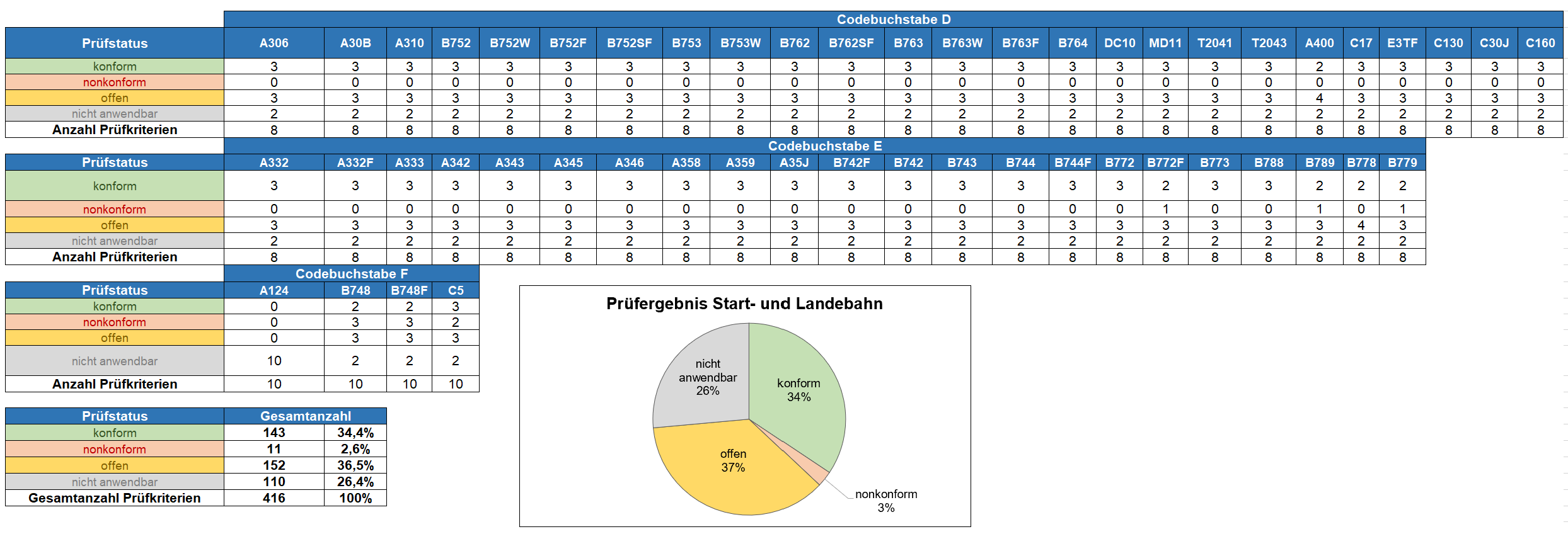The design, certification and approval of aerodromes shall be based, inter alia, on the aerodrome reference code (ARC) consisting of the following elements:
- Code number 1 to 4 depending reference field length (RFL) and
- Code letters A to F depending on the wingspan.
In particular, the infrastructural design of the movement areas (e.g. RWY/TWY width, load capacities, minimum distances, etc.) in accordance with the EASA guideline CS-ADR-DSN is based on the ARC. If aerodrome operators intend to operate aircraft with a higher code letter (HCLA) than indicated according to the certification basis, prior approval by the responsible approval authority according to EU/EASA ADR.OPS.B.090 Use of the aerodrome by higher code letter aircraft is required. The basis of this approval is the implementation of a compliance analysis and subsequent safety assessment in order to demonstrate that the existing aerodrome infrastructure as well as the organizational and operational structures permit the safe flight operation of HCLA (e.g. operation of code F aircraft on an aerodrome with ARC 4C).
The compliance checks carried out by GfL essentially comprise the following process steps:
Analysis of status quo:
- Acquisition of general flight operational information (e.g. existing movement areas, lighting and approach procedures as well as flight movements and traffic mix)
- Analysis of operating procedures and agreements (e.g. roll guidance concept, special procedures, already implemented HCLA procedures, etc.)
- Analysis of the obstacle situation especially in RWY and TWY strips
- Determination of HCLA reference aircraft and preparation of their relevant characteristics (e.g. wingspan, length/height, engine position, aircraft classification number (ACN) etc.) based on aircraft manufacturer information.
Compliance analysis:
- Execution as target/actual comparison: status quo at the respective aerodrome vs. target state according to EASA CS-ADR-DSN in the form of test criteria of the main categories RWY, TWY, aprons and obstacle free zones
- Determination of the status quo is mainly based on documents (e.g. CAD plans of movement areas) according to the analysis of status quo.
- Evaluation takes place in the form of the so-called test status (compliant, non-compliant, open or not applicable).
- Target/actual comparison provides a detailed description of the condition of the aerodrome infrastructure and the associated guideline requirements for the respective test criteria in relation to each specified reference aircraft
- Documentation of all test steps and results in an Excel checklist, which can be adapted to the individual needs of the airport operator / client.
For non-compliant combinations of test criteria and reference aircraft, assessment is first carried out to determine whether the HCLA procedures currently available at the respective aerodrome are sufficient to ensure safe flight operations. If these are assessed as inadequate, the following examination steps are carried out:
Risk analysis/assessment:
- Risk assessment is based on the Safety Assessment Methodology (SAM) of EUROCONTROL as well as on the instructions in the "Rahmenhandbuch Luftfahrtverwaltung" of the Federal Ministry of Transport and Digital Infrastructure (BMVI)
- Consideration of the specifications, recommendations and test results in accordance with:
- ICAO Cir 305: Operation of New Larger Aeroplanes at Existing Aerodromes
- ICAO Aerodrome Design Manual (ADM) Doc 9157
- Airport Compatibility Group of the aircraft manufacturers Boeing (BACG, here in particular B748) and Airbus (AACG, here in particular A388)
- Main application of qualitative analysis/evaluation methods (in particular comparison and geometry analyses of reference aircraft) on the basis of specific flight operations, and flight performance interrelationships, analytical calculations and general mathematical-physical principles
If infrastructure deviations are detected, risk mitigation measures, operating procedures or operational restrictions shall be implemented in order to achieve an adequate level of safety. The measures to be finalized may include, for example, the following:
Operational risk mitigation measures:
- Adaptation of the roll guidance concept,
- Use of follow me vehicles and/or wingwalkers in HCLA operation,
- Blocking of specific movement areas in HCLA operation etc.
Infrastructural risk mitigation measures:
- Removal of obstacles,
- Retrofitting/widening of SLB/TWY shoulders,
- Adaptation of markings on movement areas etc.
In the overall result, the compliance and risk analyses carried out in accordance with the above-mentioned methodology provide a comprehensive assessment of HCLA operations at aerodromes and form the basis for the preparation of corresponding application documents for submission to the competent authority.





